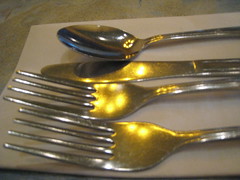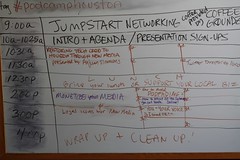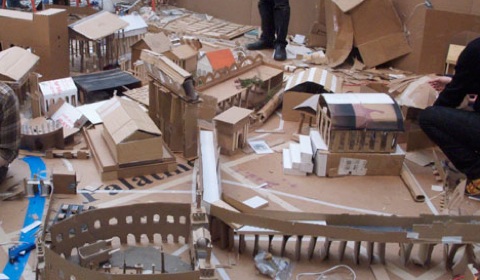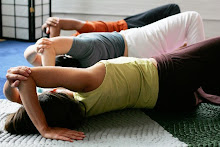 Image by MyEyeSees via Flickr
Image by MyEyeSees via Flickr
Knives, forks, spoons; dessert forks, butter knives, serving pieces. I soak everything in the kitchen sink in warm sudsy water. Then, with paste silver polish and that funny sponge that comes with it, I polish each piece, and then set it in the other side of the sink, in clear water. Some of the pieces are hardly tarnished at all, while others are very discolored. Each piece gets an inspection and at least a once-over with the silver polish. When I finish, all the silver is gleaming. It gets a final rinse in hot running water, and a last inspection before drying each piece with a soft cloth, then placed on the table. First the place settings, then the large serving spoons are staged about the theater. Dinner is show time and go time.
I've grown to love this chore, the older I've gotten. I remember my mother taking out the silver when my cousins and their parents came to visit for the holidays. The polishing was a task given to the children, and come to think of it, was probably the best way of keeping a bunch of kids busy and out of the way. This year, as I polished, I thought of all of those children. I also thought of my grandmother as a young bride. This was her silver, wedding presents given at the turn of the 20th century. She had five children and was married more than fifty years. She must have used this service countless times. Did her children polish it, or was it for the maid to do? Who sat around her table, sharing holidays and everyday meals with the family, year after year?
That's the thing about performing a mindless task -- your mind wanders all over the place. Random thoughts, memories, curiosities are evoked in the action, whether it's polishing silver or "chop wood, carry water." I felt connected, via the silver and the act of polishing, to the past, present, and future. The meal, the friends, their families near and far, on and on, all formed a dense web of interconnections through space and history that I could actually FEEL. Simple objects, actions, and awareness are the touchstones for reviving these connections. They help us -- me -- to recognize a profound sense of sacredness in the everyday.
As I pondered these connections, via silver polishing, I realized that the work of a Feldenkrais teacher is about helping people to make unexpected connections. The gentle movements seem kind of mindless and repetitive, and they usher you into a state where your mind can wander. Typical patterns are interrupted, and new sensations pique interest, curiosity, and appetite for more. People sense connections within their own bodies: for example, the way your feet contact the floor can be sensed in your jaw and neck -- and return to an almost childlike amazement at how "new" they feel.
The act of ritual doesn't have to be mindless or compulsive. Any action, repeated mindfully, can become a vehicle for improvement, possibility, connection, and creativity. The work of Moshe Feldenkrais is a method of intelligent, mindful action. Last weekend, it leaped up off of the floor and into my sink with the silver polish. I felt, and feel, extremely appreciative for all of it.

![Reblog this post [with Zemanta]](http://img.zemanta.com/reblog_e.png?x-id=c0c4a5ef-b047-4473-a0c7-01abc362f815)

![Reblog this post [with Zemanta]](http://img.zemanta.com/reblog_e.png?x-id=c6f8d7a3-eec5-4a63-9207-58850a9dc795)
![Reblog this post [with Zemanta]](http://img.zemanta.com/reblog_e.png?x-id=a8ccc4e1-fd20-470c-8b87-24034a5f302f)

![Reblog this post [with Zemanta]](http://img.zemanta.com/reblog_e.png?x-id=37460047-f1cc-4bbf-8580-feb9e47f1ed9)


![Reblog this post [with Zemanta]](http://img.zemanta.com/reblog_e.png?x-id=c29901a1-99cf-433b-9f23-036d1d9642f0)

![Reblog this post [with Zemanta]](http://img.zemanta.com/reblog_e.png?x-id=b5b476b1-4213-4509-b08f-3678094f3256)

![Reblog this post [with Zemanta]](http://img.zemanta.com/reblog_e.png?x-id=70d88ba2-43f6-4dba-80b8-c06e6bef19d0)

![Reblog this post [with Zemanta]](http://img.zemanta.com/reblog_e.png?x-id=726ee306-f565-43ae-a480-31574e2ad524)

![Reblog this post [with Zemanta]](http://img.zemanta.com/reblog_e.png?x-id=7ad2e226-6286-4efa-aecf-fc07d1da779d)









